Exploring the future of journalism
 The future of journalism and content monetization are among the most debated topics in the media industry.
The future of journalism and content monetization are among the most debated topics in the media industry.
At the recent DLD (Digital Life Design) conference in Tel Aviv, media experts from renowned publications such as Wired UK, Daily Mail and the Wall Street Journal gave their perspective on the future of the publishing industry.
Here is an overview of some of the key points raised.
Online journalism differs from traditional journalism, but is still very demanding:
 James Bromley, former Managing Director of MailOnline.com: “We were very unfashionable about creating online content. You have to be incredibly fast running, predict where stories are. There are no weeks of research as in print. But it’s not less diminishing”.
James Bromley, former Managing Director of MailOnline.com: “We were very unfashionable about creating online content. You have to be incredibly fast running, predict where stories are. There are no weeks of research as in print. But it’s not less diminishing”.
 Ben Rooney, technology editor, Wall Street Journal (WSJ), Europe: “Newspapers used to be a good distribution mechanism. People used to buy newspapers in the morning to read the news of yesterday. The Internet could blow these things to pieces”.
Ben Rooney, technology editor, Wall Street Journal (WSJ), Europe: “Newspapers used to be a good distribution mechanism. People used to buy newspapers in the morning to read the news of yesterday. The Internet could blow these things to pieces”.
Both monthly titles and online publications are built around trust their audiences put in them:
Ben Rooney, WSJ: “It’s the question of trust and responsibility. Newspapers live or die by the scoops they can get. What the Wall Street Journal sells is trust. If news appears in the Wall Street Journal, it moves the market. It’s very humiliating to get a correction”.
![]() read more
read more
Interactive and social media documenting Australian bushfires
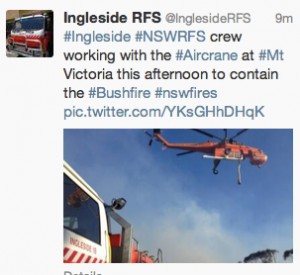 The extensive bushfires in the Australian state of New South Wales have made global headlines in the past week.
The extensive bushfires in the Australian state of New South Wales have made global headlines in the past week.
Social media, particularly via the Twitter hashtag #nswfires, is serving as a way for media and emergency services to post updates, but also for users in fire affected areas to document and share information, experiences and photos.
A number of bushfire photos also went viral via social media. For example this shot of exhausted firefighters resting on a road.
https://twitter.com/theage_photo/status/391186566095196160
On YouTube, this helmet camera footage posted by the Blackheath – Mt Victoria Rural Fire Brigade shows the extreme conditions firefighters are facing.
Australia’s public broadcaster, ABC, plays an important role during natural disasters and emergencies such as bushfires, to keep communities accurately informed – particularly through their local radio network.
That’s a huge media development topic to explore on its own, particularly for national media networks in developing countries seeking a model for informing and communicating with audiences during natural disasters.
For now though, what caught onMedia’s eye was the ABC’s use of tools such as Storify and ThingLink to help visualize stories on their live bushfire blog.
![]() read more
read more
Tools and Apps for Journalists: Monopod
 We all know that achieving a steady shot or reducing blur in an image is much easier with a tripod. It’s one of the most essential pieces of equipment for photographers, VJ’s and camera operators.
We all know that achieving a steady shot or reducing blur in an image is much easier with a tripod. It’s one of the most essential pieces of equipment for photographers, VJ’s and camera operators.
But what about the humble monopod?
From getting a high shot over a crowd to supporting a camera, a monopod is one of the most useful tools that should be in your kit bag.
And whether you’re working with a camcorder, a digital camera or a smarthphone, read on to find out more about using a monopod and adapting it to your filming needs.
![]() read more
read more
People Who Innovate – Mark Little, Storyful
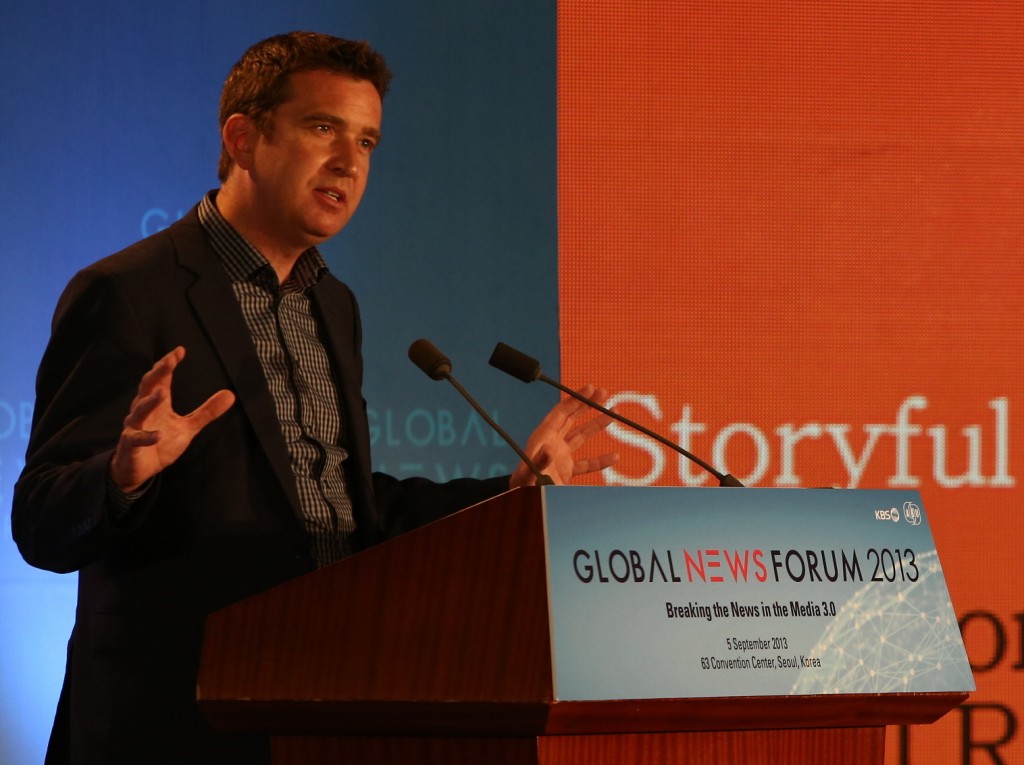 Irish journalist Mark Little quit his job as a prime time news anchor in late 2009 to found Storyful, a news service with a twist. Like traditional news agencies, Storyful delivers news content to media organizations. The novelty is that this content is culled from social media networks such as Twitter, YouTube and Facebook. Storyful journalists comb social media networks for interesting or dramatic videos, photos or other items. The information is then verified and put into context before being made available to the company’s subscribers (see here for how Storyful verifies stories from Syria).
Irish journalist Mark Little quit his job as a prime time news anchor in late 2009 to found Storyful, a news service with a twist. Like traditional news agencies, Storyful delivers news content to media organizations. The novelty is that this content is culled from social media networks such as Twitter, YouTube and Facebook. Storyful journalists comb social media networks for interesting or dramatic videos, photos or other items. The information is then verified and put into context before being made available to the company’s subscribers (see here for how Storyful verifies stories from Syria).
Three years since it was founded, Storyful has attracted some major clients, including ABC, Al Jazeera and the New York Times, and generated hundreds of articles about its innovative take on news gathering – though the company has yet to break even. DW Akademie’s Kate Hairsine talks to Mark Little about why he started up a social media news agency in the first place, his belief in journalism and why he thinks journalists can make great entrepreneurs.
![]() read more
read more
Journalism at play
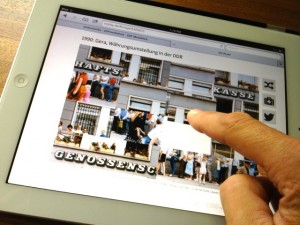 The term newsgames has been around since the early 2000s and refers to digital games, which are used in a journalistic context and have been developed with journalistic and ethical standards in mind. In contrast to traditional linear media, these games offer an interactive experience of content. Leading media houses such as the New York Times, BBC, the Guardian and Le Monde have already experimented with this storytelling format.
The term newsgames has been around since the early 2000s and refers to digital games, which are used in a journalistic context and have been developed with journalistic and ethical standards in mind. In contrast to traditional linear media, these games offer an interactive experience of content. Leading media houses such as the New York Times, BBC, the Guardian and Le Monde have already experimented with this storytelling format.
Newsgames need not be expensive and complicated to develop. In this post, Marcus Bösch, DW Akademie trainer and director of the Serious Game Studios the Good Evil, explains what you need to produce a small game based on a straightforward example.
![]() read more
read more
13 journalism blogs in English that you should know
 Few professions are changing as quickly as journalism.
Few professions are changing as quickly as journalism.
Gone are the days of simply typing up your story and submitting it for proofreading, or signing off from a program and disappearing into the ether.
With the ever increasing developments in multimedia and visual storytelling; data journalism and visualization; online security; finding sources on social media; and, publishing stories to different platforms, there’s only so much a humble textbook can keep pace of in modern journalism.
And while traditional text books (and eBooks) are important, as well as MOOC’s (massive open online courses), following blogs authored by big thinkers in journalism is a great way to learn essential skills, discover new trends and join the conversation on the future of our profession.
DW Akademie’s Natalia Karbasova has dived into the English speaking journalism blogosphere for onMedia and has surfaced with 13 blogs you should bookmark and read regularly.
![]() read more
read more
Interview: New newsrooms mean more teamwork

CC image courtesy of victoriapeckham on Flickr
Many traditional newspaper publishers have completely restructured their newsrooms so that their print and online departments now work together. The way that they have done though varies enormously. In some, print and online journalists work side by side; in others, there is no distinction between the two departments at all.
Klaus Meier is a German media expert who has been closely observing exactly how media organizations are integrating their newsrooms. Together with researchers from Spain and Austria, Meier first published a detailed analysis of newsroom convergence in 2008. The team have done a follow up study this year.
DW Akademie’s Steffen Leidel talked to Klaus Meier about what newsrooms look like today and what these changes mean for the journalism of the future.
![]() read more
read more
People Who Innovate: Anna Chervyakova
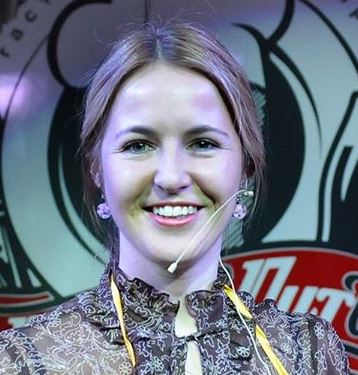 Independent and innovative online media are not exactly what Russia is famous for.
Independent and innovative online media are not exactly what Russia is famous for.
However, there are exceptions to the rule. The kublog.ru project in Krasnodar in southern Russia was developed around the idea to build communities interested in the local events. Some three months after its launch, kublog.ru has reached around 1000 unique daily users and has sparked a lot of controversy over its independent critique of the local media, restaurants and art events.
DW Akademie’s Natalia Karbasova talked to editor-in-chief Anna Chervyakova about kublog’s development and locally focused internet communities in Russia.
![]() read more
read more
Tools and Apps for Journalists: ThingLink
What is ThingLink?
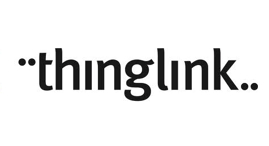 Add extra layers of information to images by adding links.
Add extra layers of information to images by adding links.
Thinglink lets you embed “tags” – hyperlinks and text – into images. If you have a great photograph or image you can add a link to another photo, or a website, or video clip, or audio clip – literally anything. It’s a very useful tool for creating simple pieces of interactive media to compliment a story or to use as a basic story platform. This tool is always a winner with participants in online journalism workshops. As we roll our mouse over a “tag” revealing a link to another piece of media, there is usually a collective “Aha!” from participants. And if you’re a regular reader of onMedia, you’ve probably noticed that we like to use this tool a lot.
In a much cited example here in Germany, the Berliner Morgenpost used ThingLink very effectively with a photograph of the White House Situation Room during the raid on Osama bin Laden’s hideout. The icons identify who was in the room and provide relevant links.
![]() read more
read more
Interviews: how to handle requests for questions in advance
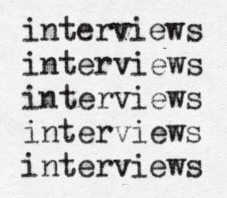 “What should I do if an interviewee wants to see a list of questions before the interview?”
“What should I do if an interviewee wants to see a list of questions before the interview?”
This is a question that comes up many times in journalism training courses.
Journalists around the world are often faced with the situation where a person they want to interview asks, or even demands, to see a written list of the questions before the interview can take place. It’s also a common request from pushy public relations consultants or the press staff of politicians.
Even journalists just starting out in their career instinctively know this isn’t a good idea. But they and more experienced journalists often lack strong arguments to convince potential guests to do an interview without seeing the questions first.
![]() read more
read more








Feedback